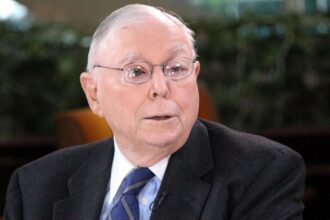So, how’s that New Year’s resolution working for you? By late March, many aspirations—both personal and professional—are woefully off course, perhaps abandoned entirely. That’s because we forget to step back and assess: Are we on track? Where are we headed? Have we learned anything that changes how we’ll meet our personal philanthropic goals or that will help financial advisors meet their clients’ objectives?
By understanding recent giving trends, we find better paths toward our philanthropic aims. As we saw in the recent 2023 Giving Report by Fidelity Charitable®, 2022 was a year when philanthropy became a sustaining force for nonprofits despite economic pressures. Bolstered by their use of smarter giving strategies, our donors—whose giving patterns were analyzed for the report—were able to aid nonprofits when they needed it. Here are five lessons from the research that can shape individual giving and help advisors guide clients.
1. When the economy trended down, donors stepped up
Let’s start with the best news: People are still giving at very high—and even record—levels. The continued generosity comes in the wake of news headlines that might make you assume otherwise.
Throughout 2022, you saw countless unsettling stories about rising inflation and interest rates. According to the U.S. Bureau of Labor Statistics, by June consumer prices spiked 9.1%. Recession fears and job layoffs hit employees hard. And then there were market swings, with the S&P 500 dropping 19% in 2022. Yet, Americans still stepped forward to support nonprofits. Fidelity Charitable® donors recommended a record 2.2 million grants worth $11.2 billion to 189,000 charities in 2022. That’s nearly $1 billion more in grant dollars distributed by Fidelity Charitable to nonprofits—a 9% increase—than in the prior year. After Covid-19 and a market slide, Americans are sending a signal: They’re ready to step up their giving in uncertain times. What helps is that many donors are setting some funds aside— potentially growing their contributions tax free over time via a variety of investment options (hint: see No. 3 below). This allows them to continue supporting nonprofits during economically challenging years like 2022.
2. Despite reasons to be cautious, donors gave with trust
There’s more good news from last year: Despite economic anxiety and rising caution, donors gave with immense trust. In 2022, 63% of Fidelity Charitable donor grant recommendations were designated “where needed most.” That means nonprofits had the flexibility to apply funds to their top priorities. And according to research from the Center for Effective Philanthropy (CEP), which studied Mackenzie Scott’s approach to unrestricted gifts, trust-based philanthropy has made a positive impact in ways that can be particularly valuable in an era when rising costs and tightened budgets push nonprofits to shift resources. CEP’s research shows that unrestricted gifts from Scott allowed nonprofits to not only expand their programming but also empower their leaders to focus less on fundraising and budgeting concerns and more on carrying out the core missions of their organizations.
3. Donors can contribute beyond cash—and potentially give more
With economic uncertainty creating apprehension for people nationwide, one wonders: How has the upward giving trend continued? For a lot of donors, it’s been their ability to donate non-cash assets. One way they’re doing this is by using a donor-advised fund (DAF), which is like an investment account for charitable giving. DAFs can help people give a wider variety of assets and grow those assets tax free, enabling them to potentially give more than they might imagine. This isn’t hypothetical. Two-thirds of Fidelity Charitable donors say they’ve given more to charity than they would have without their DAFs.
Most charitable contributions in the United States are made via cash, checks, or credit cards. But 57% of donations to the DAF sponsored by Fidelity Charitable in 2022 were non-cash assets. These include publicly traded securities, privately held business interests like private stock and limited partnership interests, and other non-publicly traded assets like cryptocurrency. By donating long-term appreciated assets to their DAFs, donors became eligible to claim immediate income tax deductions on the full fair- market value of the assets and to possibly minimize capital gains taxes on their appreciation following the tremendous growth of the past decade, potentially allowing them to give more.
4. Even as publicly traded assets were down, those with non-publicly traded assets continued to tap those resources for giving
Often, assets like restricted stock or shares of private business are too complicated for small nonprofits to accept directly. But some DAF sponsors can help convert these difficult-to-donate assets into cash, which is then available for granting to nonprofits. This versatility adds up. Our Fidelity Charitable donors contributed $1.4 billion in non-publicly traded assets during 2022. Minus the flexibility that DAFs offer, these complex donations may have been delayed or sidelined altogether.
5. Philanthropic heartstrings lead to repeat—and responsive—giving
It’s no secret that people are driven by their philanthropic heartstrings—personal passions for causes (and nonprofits) that turn into repeat giving. In 2022, for example, 77% of Fidelity Charitable grants went to nonprofits that the donors previously supported. When people show that kind of commitment to their favorite charities, they create a reliable, consistent stream of revenue that nonprofits can count on.
The philanthropic heart also beats in spontaneous ways. Look at the outpouring of support from our donors who recommended hundreds of millions in grant dollars to provide aid to the sudden humanitarian crisis in Ukraine. Natural disasters—flooding in Kentucky and Hurricane Ian in Florida— also brought a surge of donor support for nonprofits that worked on the ground at home and abroad. This year, we’ve seen further support for earthquake victims in Turkey and Syria.
The lessons of 2022 prepare us for the future. With equity markets primed to rebound, last year’s strong lean toward giving non-cash assets is likely to continue. There are also generational considerations for philanthropy. For instance, Baby Boomers have amassed immense wealth, yet not enough have legacy plans. How will they establish their philanthropic legacies, pass along their charitable values, and ensure continued support for the charities they love? And for those interested in new tax-smart giving strategies, consider Secure Act 2.0 impacts. With an age increase for IRA required-minimum distributions and a higher qualified-charitable contribution limit (DAFs and private foundations still aren’t eligible), people will look for financial advisors who can guide them on charitable strategies that take their entire wealth management portfolios into consideration.
Read the full article here










